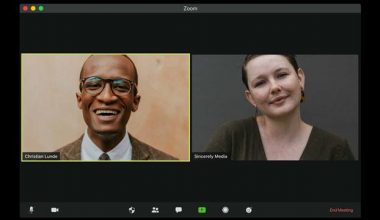
In my first article, I shared three elements to include in virtual instructor-led training (VILT) to engage both the live learners and the learners who watch the recording afterward. This article will help you think more about the life of the recording and create a two-step protocol to follow after you complete a live session.
Step 1: Edit the Video File
Editing should be simple. You can do it in any video editor program, and it does not require special skills or a large amount of time. The goal in editing a recorded session is to make it feel and act like a standalone piece rather than a recording. This approach can make a big difference in the asynchronous learning experience and in learner engagement. Here are a few things to keep in mind:
Cut Technology Fumbles
If, at any point during the live session, there was chatter from the facilitator or participants about a sound issue, a screen-share that didn’t work or general technology troubleshooting, cut it out of the recording. It has no relevance to the asynchronous learners and will drain their engagement.
Cut the Breakout Sessions
When a breakout session occurs in a live event, it leaves silent, black-screened sections in the recording for as long as the breakout occurred. If there was a 10 minute breakout, there are 10 minutes of dead air on the recording.
If the breakout was conducted in conjunction with an activity on the downloadable worksheet, keep two or three minutes of dead air in the recording for the asynchronous learner to complete the activity. This way, the recording supports their need to pause and reflect.
Cut Dead Air to Tighten up the Recording
For example, if there is four minutes of waiting at the beginning of the live session to allow for participants to arrive, cut out that four minutes in the recording. This time has no relevance to learners watching on their own time and tells them that they are an afterthought.
Cut the Response Time From Chat and Poll Prompts
If chats or polls are used in the live session, find out whether your technology platform will show the poll or chat content in the recording. Then, cut the time it takes for everyone to answer these prompts. It may only be 10 to 20 seconds in the recording, but it’s time when the asynchronous learner cannot participate. Show content that explains the poll, and then cut directly to the results.
Cut Q&A Time
Only keep participants’ questions if they’re relevant to the content. Again, an asynchronous learner shouldn’t be spending time watching irrelevant questions and answers that pertain only to the live event.
Step 2: Make the Training Easily Accessible
Once you’ve edited the recorded file, it’s critical to have a sustained, standalone location for learners to access it. To evaluate accessibility, answer these four questions:
What platform is the learning stored on? (Sending it in an email is not enough; an inbox is not a storage location.)Where can learners access the worksheet?How can learners ask the facilitator questions?Where is the training evaluation link located?
Answering these questions will provide guidance on the best fit for with your organization’s processes and resources.
Virtual training has enormous potential for organizations and learners alike, by reaching learners wherever they’re located, by eliminating training travel costs and by providing learning engagement techniques that may not be capable in a physical classroom.
It’s time to understand the needs of all virtual learners — synchronous and asynchronous — and to design virtual learning with elements that cater to everyone to provide consistent engagement. It’s also critical to treat recorded sessions with intentionality after a live session rather than as an afterthought. Recordings are a critical step in a design process that creates an engaging and purposeful learning experience.







